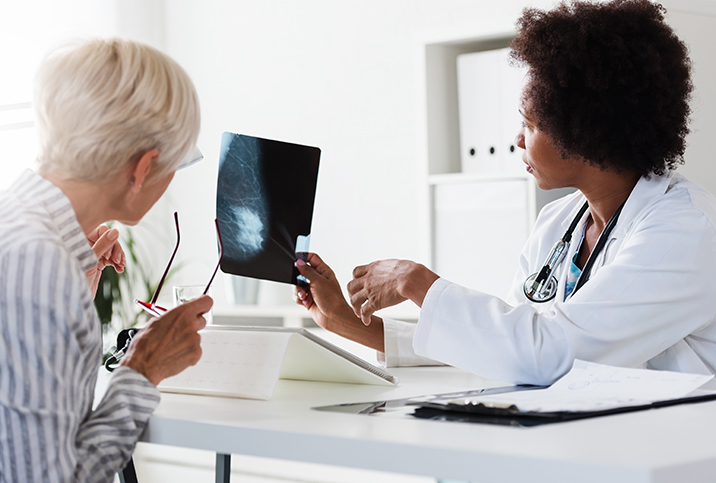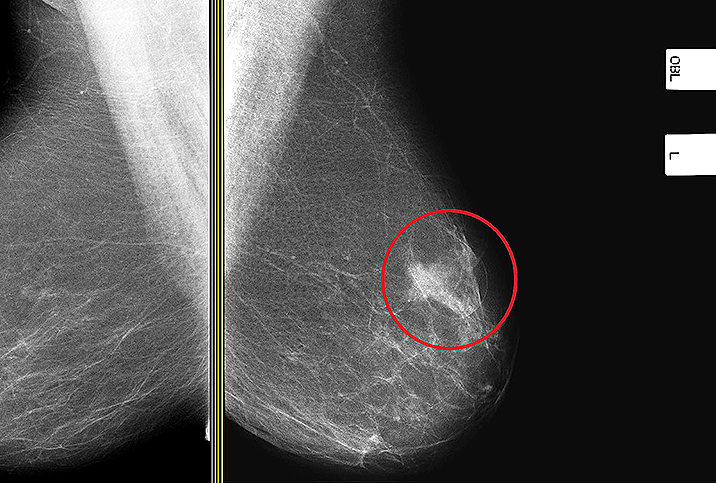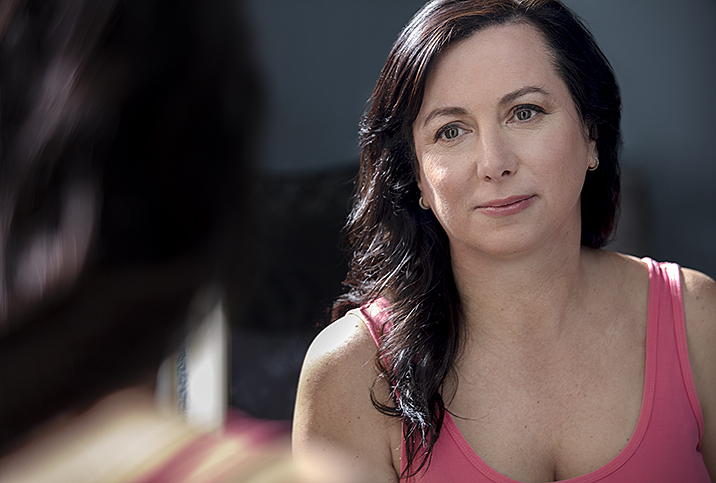Abnormal Mammogram Results: What Could Be Wrong?

Every woman, and especially those over 40, should know the importance of getting regular mammograms. But what happens if the mammogram results indicate that further testing is needed?
First, there's no need to hit the panic button. A variety of lumps and dense-tissue areas can show up on a mammogram, and many of them are benign. The request for further testing does not mean you have breast cancer.
What is an abnormal mammogram?
The appearance of breast tissue varies from person to person. For instance, some women have dense breasts. Older women tend to have small calcium deposits, which are usually benign but sometimes can indicate early cancer cells.
Other common findings from a routine mammogram are cysts (fluid-filled sacs) or fibroadenomas (noncancerous tumors). Both of these types of masses are benign and will not need to be removed unless they are causing severe discomfort.
How to prepare for your follow-up appointment
Typically, when you are going for a follow-up appointment, you will be getting a diagnostic mammogram. It often begins with the technician taking more images beyond those of your routine mammogram. The technician might also magnify a certain area to give the radiologist clearer images.
These procedures may put more pressure on your breasts to get a better reading. If you are worried about discomfort, you may want to take pain medication such as aspirin or ibuprofen 45 to 60 minutes prior to your appointment to relieve any discomfort.
In addition to a diagnostic mammogram, your doctor or radiologist may suggest a breast ultrasound, a safe and painless procedure.
In addition to a diagnostic mammogram, your doctor or radiologist may suggest a breast ultrasound, a safe and painless procedure. Ultrasound uses sound waves to determine the composition of the finding—whether it's a fluid-filled cyst, a noncancerous lump or a potentially cancerous tumor.
If further diagnostics are needed, you may be asked to have a needle biopsy, which is an outpatient procedure. A biopsy removes a small tissue sample from your body, using an anesthetic to numb the area. The sample is sent to a lab where a pathologist can examine it for cancer.
During the procedure, a tiny marker called a clip will be placed in your tissue as a guidepost for future mammograms, indicating the area of concern. You won't feel the clip and it won't cause any problems with medical equipment or metal detectors.
No stitches are needed after a biopsy, and although you may have some bleeding or bruising, you should be able to go about your normal activities so long as you're careful not to do anything too strenuous for a day or two.
Test results can take up to 10 days as your team of medical professionals consults with one another about what the images and tissue reveal. This long wait can be a very anxious time, and everyone handles it differently. You may want to plan ahead to meet with friends or family to take your mind off of it. Or you may want to practice some relaxation techniques. Or if you just can't quell that nervous energy, you could channel it into putting together a list of questions for your doctor.
What if you have breast cancer?
If your doctor diagnoses you with breast cancer, the next step will be determining what stage your cancer is in. This, unfortunately, means more tests, though which kind and how many will depend upon a variety of factors. Some of the possible tests and procedures include blood tests, breast MRI, CT scan, PET scan or more mammograms.
A complete understanding of your cancer's stage may not be possible without breast cancer surgery. The stages range from noninvasive (stage 0) to metastatic (stage IV), which means that the cancer has spread to other parts of the body.
A complete understanding of your cancer's stage may not be possible without breast cancer surgery.
Once the stage is known, your doctor can give a prognosis and work with you to decide on the best treatment options. Breast cancer treatment has made tremendous progress in recent years, and there are many support groups and other resources available to help you and your family understand what a breast cancer diagnosis could mean for you and how best to manage this change in your life.
If you receive an abnormal result from your mammogram, it is important to remember that abnormal is a wide range. Talk to your doctor about what the results could mean and try to relax while you wait for further testing.


















